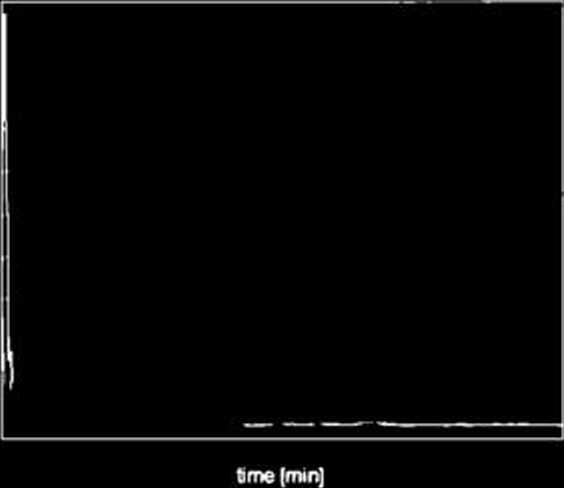117828228
Chronuitographic Fingerprints ofTwenty Salvia Species 525
wavelet, and the decomposition level was set to two. To remove irrelevant details, the 'Visu' criterion and the soft thresholding połicy were used. Fig. 3d shows the HS-GC-MS fingerprint of the volatile fraction of S. azurea after denoising by use of the wavelet transform.
Step 3: Alignment of Chromatographic Signals
The HPLC fingerprints obtained from the extracts of S. azurea and S. sclarea, shown in Fig. 4a, illustrate the peak-shift problem in HPLC data. The same is tnie for the HS-GC-MS fingerprints, so both sets of fingerprints require alignment. These sets were aligned by use of the CO W method, imple-mented in the freely available MATLAB toolbox [35]. Initially, for each fingerprint type, the target signal was selected on the basis of the correlation coefficient criterion. As target signal, that with the highest mean correlation coefficient among ali the considered signals was selected [36] and further used to align the remaining signals. Then, for each group of fingerprints, warping variables were optimized. With the HPLC fingerprints, each signal was divided into 120 sections and the slack variable was set to 5. With the HS-GC-MS fingerprints, the optimum alignment was obtained when signals were divided into 90 sections and the slack variable was set to 5.

tme (min]

Fig. 4. Two superimposed HPLC fingerprints of samples 1 and 9 (extracts of S. azurea and S. sclarea.) before (a) and after (b) their alignment using the correlation optimized
warping
To demonstrate the effect of signal alignment, let us consider the pair of chromatographic fingerprints shown in Fig. 4a. Although the samples of the herbal extracts studied tended to differ substantially in their Chemical composition, from Fig. 4b it is evident that, using the CO W method, two fingerprints were aligned satisfactorily.
Wyszukiwarka
Podobne podstrony:
Chronuitographic Fingerprints ofTwenty Salvia Species 519 Table /. The sagę (Saluia L.) species
Chromatographic Fingerprints ofTwenty Salvia Species 521 lyptus oil, and juniper o ii (Apotheca Paci
Chromatographic Fingerprints ofTwenty Salvia Species 517Alignment of Instrumental Signals Before che
Chromatographic Fingerprints ofTwenty Salvia Species 523 loss of its information content, thus consi
529 Chromatographic Fingerprints ofTwenty Salvia Species ing strategy that can be followed when deal
Chromatographic Fingerprints o/Twenty Salvia Species 515 performance liquid chromatography (HPLC), t
Heffernan, William Scarred F A savage serial killer— and the one cop tough enough to take h
NOKIA Subsystems and network elements in GSM Ciphering Both the BTS and the MS must be able to ciphe
56 A.T. Jankowski Vistula and the Oder basins was estimated in the mid-80s by M. Rogoż, A. Różkowski
The Wife of Bath then relates tales about her former husbands and reveals how she was able to gain t
CCF20130204�000 The second youth was said to be about the same age and was wearing a bright coloured
Starting and Stopping the Listener The Oracle listener is set to start automatically whenever the ho
70445 w01Q survive from the ioth century or later, and the fragments of wood attached to their rivet
CCF20091103�000 Let us try two paragraphs of tliis type. A. The time was 2:59 p.m. and the large sho
CCF20091103�000 Let us try two paragraphs of this type. A. The time was 2:59 p.m. and the large shop
DSC07926 295 oxygen 18 composition a palaeo-climate indicator and the ECM records wcre found to bc s
więcej podobnych podstron